AAW

Anti-Aircraft Warfare
Kamikaze
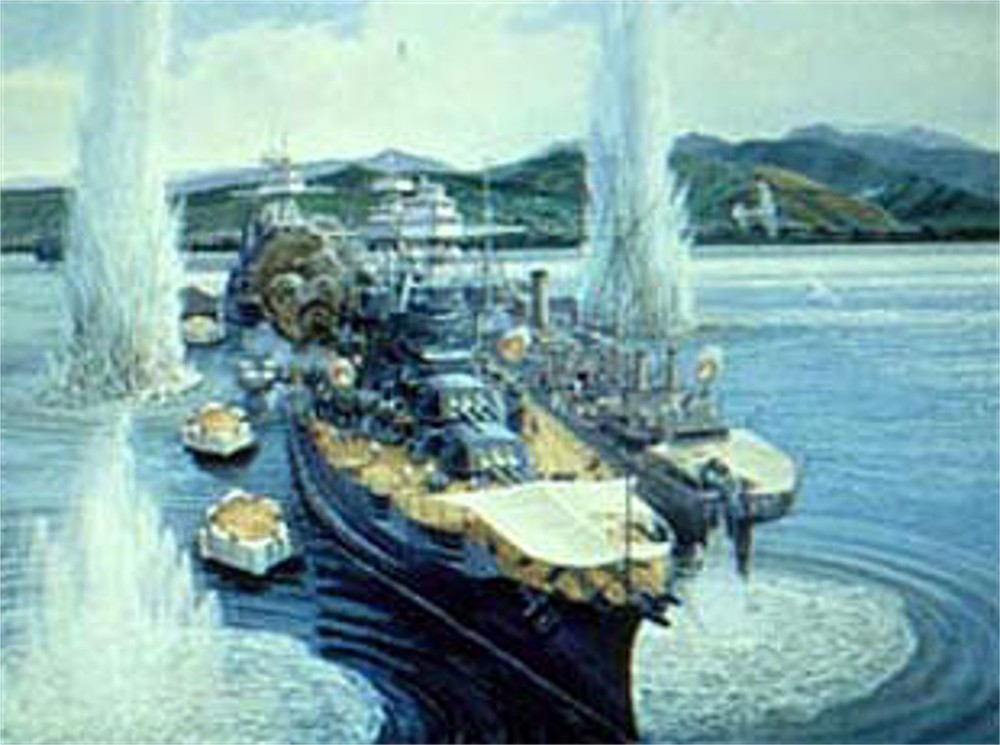
Beginning with the Pearl Harbor Attack,Japanese suicide bombers sporadically crashed their planes into the enemy as a spur-of-the-moment decision. On October 21, 1944, the flagship of the Royal Australian Navy, the heavy cruiser HMAS Australia, was hit by a Japanese plane carrying a 441-pound bomb, off Leyte Island. Although the bomb did not explode, the damage was devastating killing at least 30 crew members.
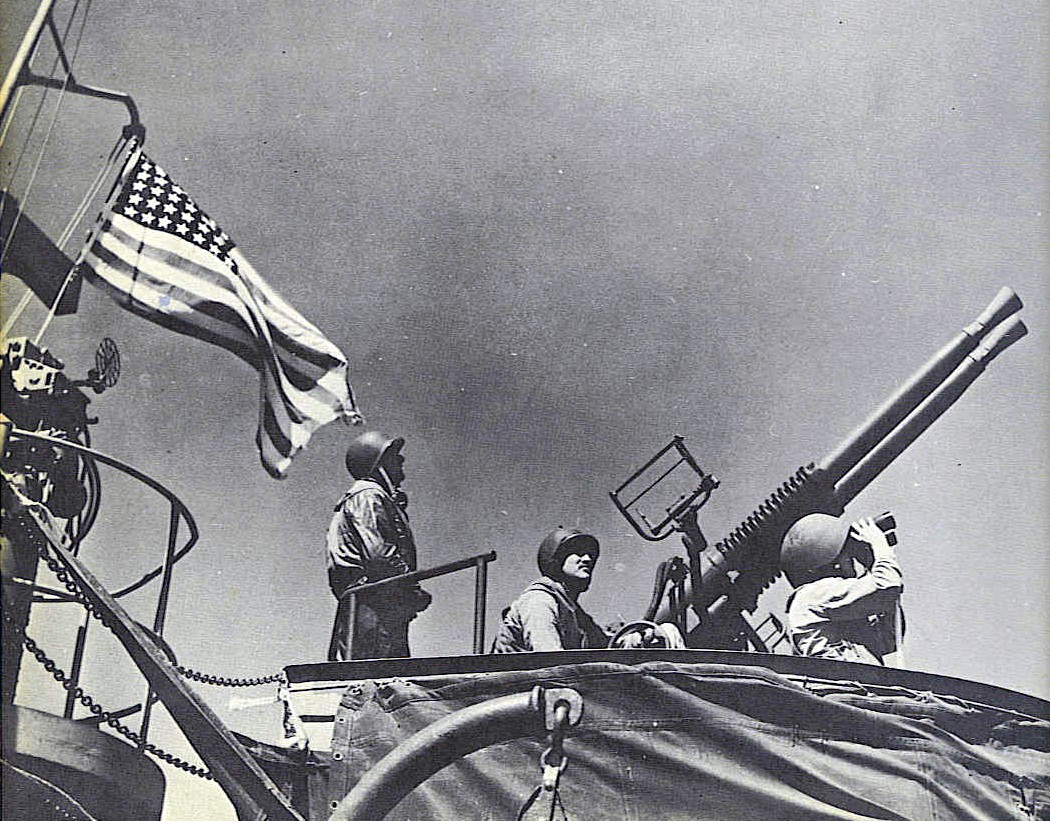
On October 25, the Australia was hit again and was forced to retire to the New Hebrides for repairs. That same day, five Zeros attacked a U.S. escort carrier, the USS St. Lo off the Philippines coast, although only one Kamikaze actually hit the ship. Its bomb caused massive fires that resulted in the ship's bomb magazine exploding, sinking the carrier. Japanese pilots also hit and damaged several other Allied ships.
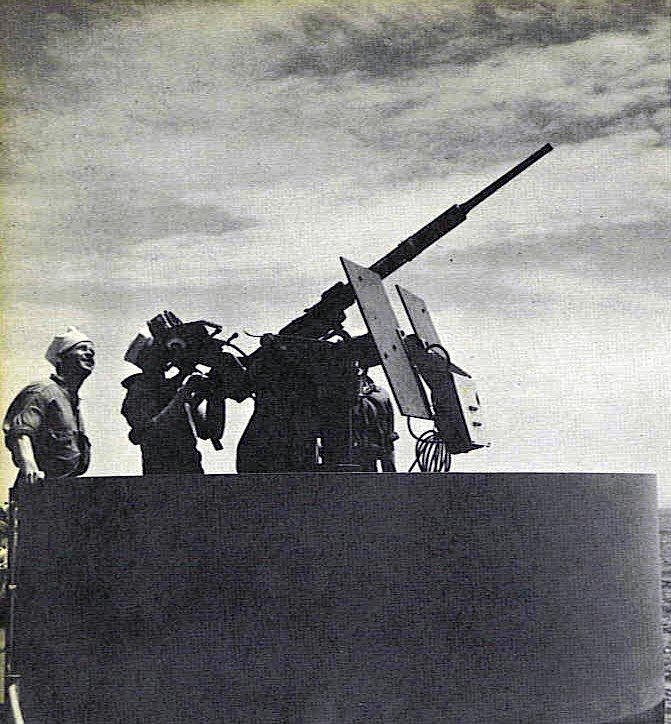
The initial successes of those attacks sparked an immediate expansion of the program. During the next few months, more than 2,000 planes staged such attacks. Those included new types of suicide attacks and explosives, including purpose-built Yokosuka MXY7 Ohka rocket-bombs, small boats packed with explosives, and manned torpedoes (equipped with a 3000-pound warhead) called the Kaiten. On February 19th, 1945, the USS Enterprise and other carriers took up stations off Iwo Jima, attacking nearby enemy airfields, and providing close air support for the Marines that landed. By the time the marines unfurled the U.S. flag on Iwo Jima's summit, Kamikaze attacks had sunk the escort flattop Bismarck Sea CVE-95, knocked the USS Saratoga CV 3 out of the war for good, and temporarily halted the Enterprise all while regularly harassing amphibious forces at the beachhead.
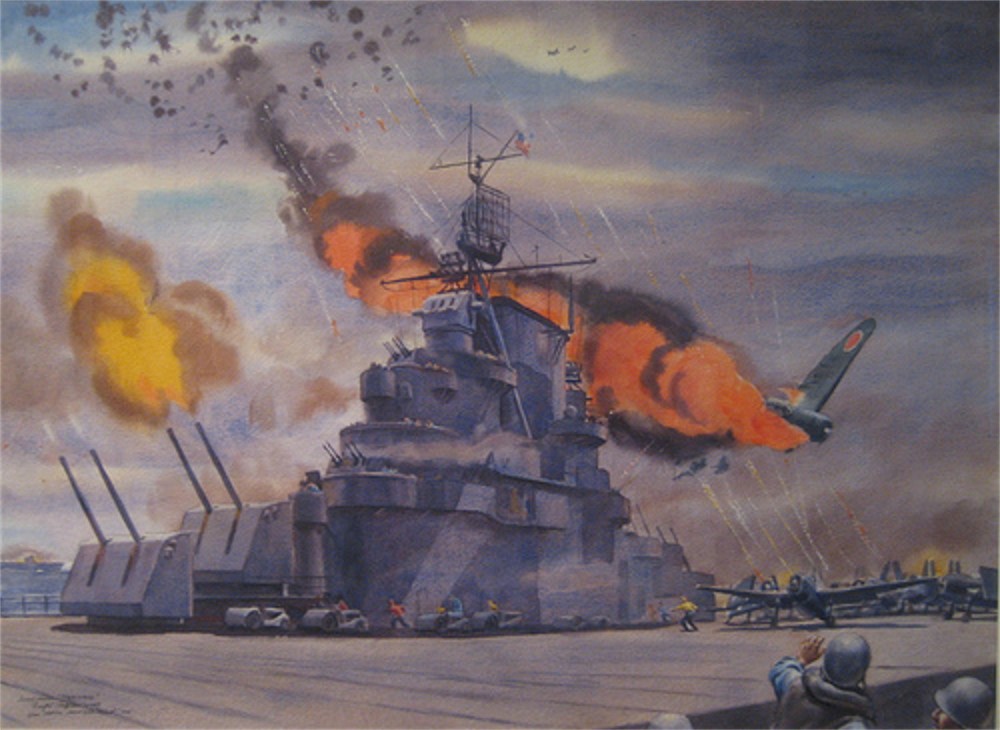
The day of April 6th, 1945, proved to be most telling for the use of Kamikazes in the battle for Okinawa. More than 350 aircraft at a time dove at the Allied fleet. Just the anticipation of Kamikaze attacks drove some American sailors literally insane. The destroyer Laffey was attacked by 20 aircraft at once. Her gunners stopped nine Kamikazes, but six others rammed into the ship. As on the similarly damaged USS Franklin, ineffable courage, and intensive training in firefighting, kept the Laffey afloat.
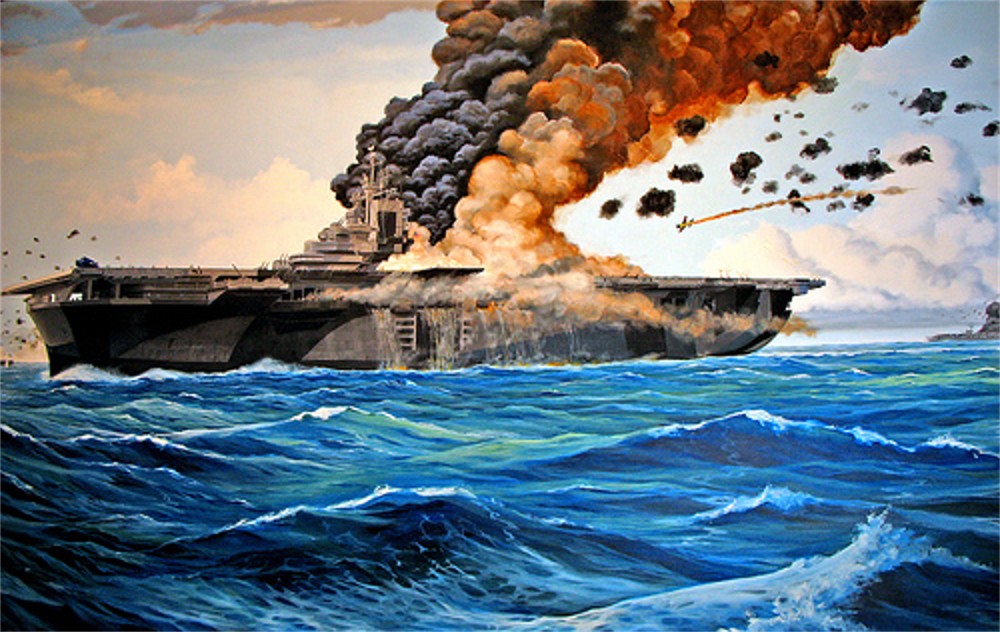
On the 7th of April, Kamikazes were still attacking in great numbers off the coast of Okinawa, severely damaging the carrier Hancock. By April 16th, suicide bombers desperately, but effectively damaged the USS Enterprise yet again, as well as the flattop USS Intrepid, and numerous picket destroyers were sunk or damaged.
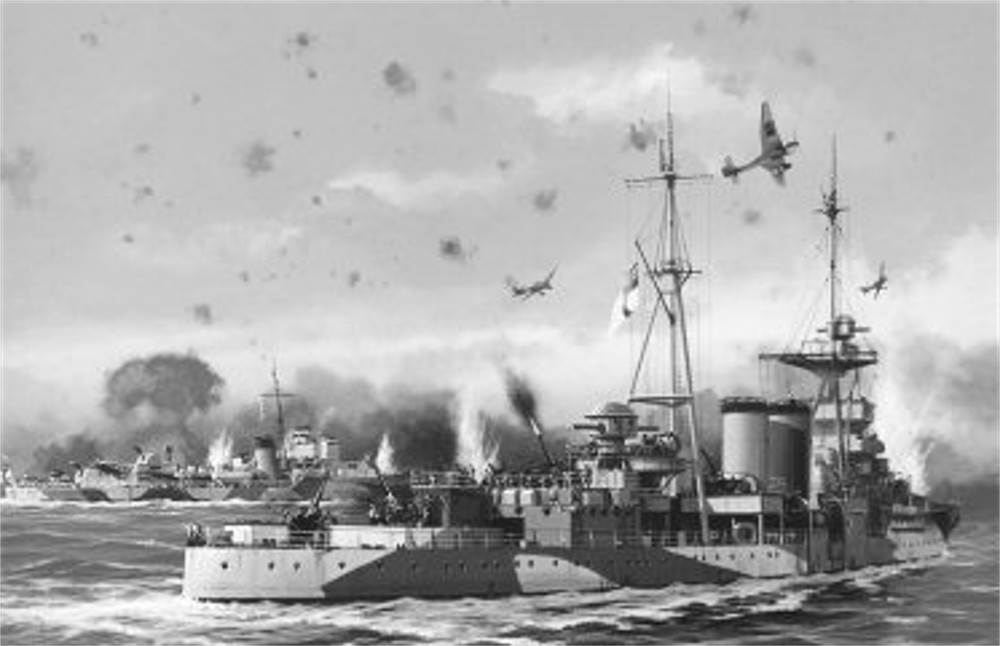
Admiral Marc A. Mitscher led Task Force 58 from his flagship, the carrier Bunker Hill CV-17. On May 11th, 1945, the flagship was hit by a Kamikaze pilot that killed 350 of his men. The final Japanese defense of Okinawa was hard fought. For the Americans, victory brought a heavy price. The capture of Okinawa cost the Americans 49,000 in casualties, of whom 12,520 died. More than 110,000 Japanese were killed on the island. When it was clear that he had been defeated, General Mitsuru Ushijima committed ritual suicide (hara-kiri).

From October 25, 1944, to January 25, 1945, Kamikazes managed to sink two escort carriers and three destroyers. They also damaged 23 carriers, five battleships, nine cruisers, 23 destroyers and 27 other ships. American casualties amounted to 738 killed and another 1,300 wounded as the result of those attacks.
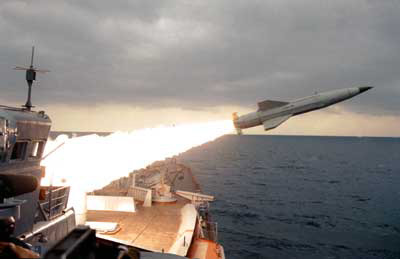
Virtually all modern vessels contain anti-aircraft weapon systems. Smaller boats and ships typically have machine-guns or fast cannons, which can often be deadly to low-flying aircraft if linked to a radar directed fire-control system. Larger vessels, patrol boats, frigates and destroyers are typically equipped with surface-to-air missile systems, with increased range and deadliness as the vessel size increases, although virtually all also carry radar-controlled cannon for point defence.
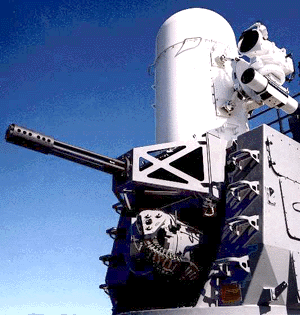
Some vessels like cruisers are as much a threat to aircraft as any land-based air defence system. In general, naval vessels should be treated with respect by aircraft, however the reverse is equally true. Carrier battle groups are especially well defended, as not only do they typically consist of many vessels with heavy air defence armament but they are also able to launch fighter jets for combat air patrol overhead to intercept incoming airborne threats.Some modern submarines, such as the Type 212 submarines of the German Navy, are equipped with surface-to-air missile systems, since helicopters and anti-submarine warfare aircraft are significant threats.
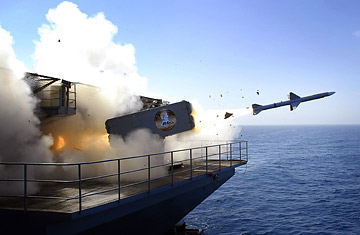
If current trends continue, missiles will replace gun systems completely in "first line" service.Upsetting this development to all-missile systems is the current move to stealth aircraft. Long range missiles depend on long-range detection in order to provide significant lead. Stealth designs cut detection ranges so much that the aircraft is often never even seen, and when it is, often too late for an intercept. Systems for detection and tracking of stealthy aircraft are a major problem for anti-aircraft development.
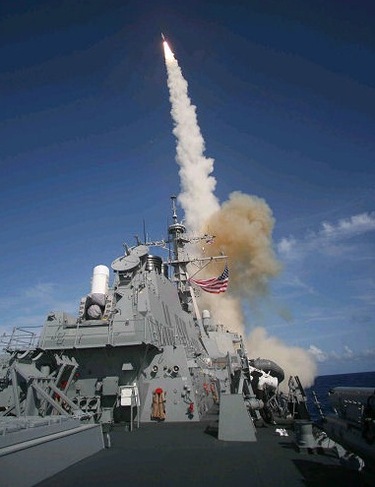
Another potential weapon system for anti-aircraft use is the laser. Although air planners imagined lasers in combat since the late 1960s, only the most modern laser systems are currently reaching what could be considered "experimental usefulness". In particular the Tactical High Energy Laser can be used in the anti-aircraft and anti-missile role. If current developments continue, some believe it is reasonable to suggest that lasers will play a major role in air defense starting in the next ten years.
The future of projectile based weapons may be found in the railgun, currently tests are underway on developing systems that could create as much damage as a BGM-109 Tomahawk, but at a fraction of the cost. In February 2008 the US Navy tested a magnetic railgun; it fired a shell at 5,600 miles (9,000 km) per hour using 10 megajoules of energy. Its expected performance is over 13,000 miles (21,000 km) per hour muzzle velocity, accurate enough to hit a 5 meter target from 200 nautical miles (370 km) away while shooting at 10 shots per minute. It is expected to be ready in 2020 to 2025. These systems while currently designed for static targets would only need the ability to be easily retargeted to become the next generation of AA system.



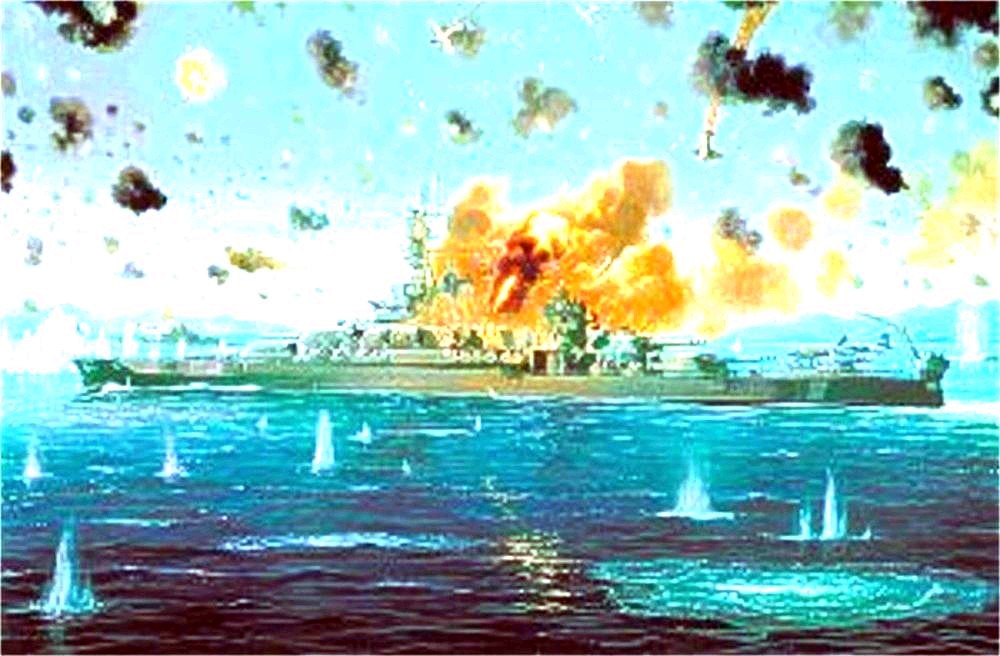
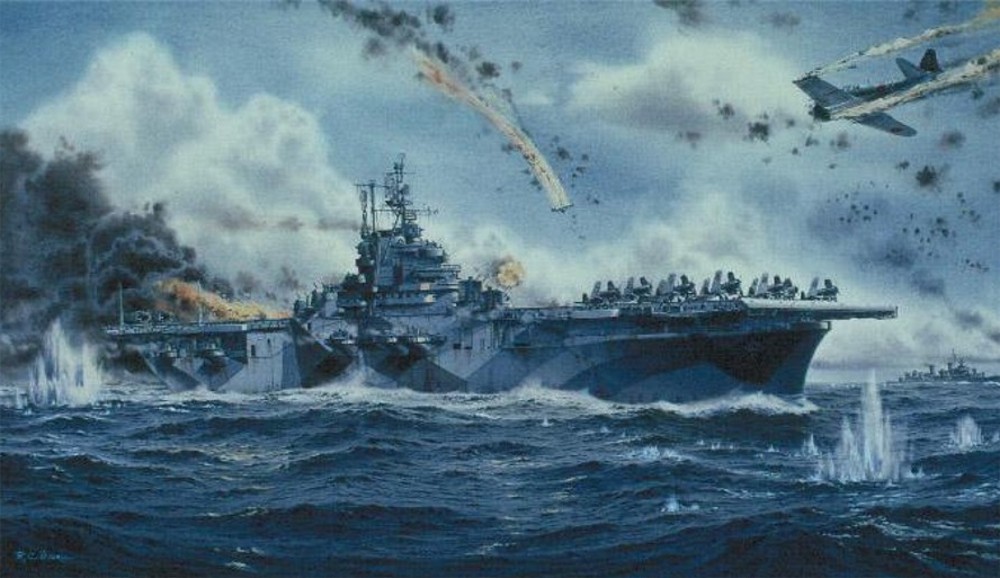
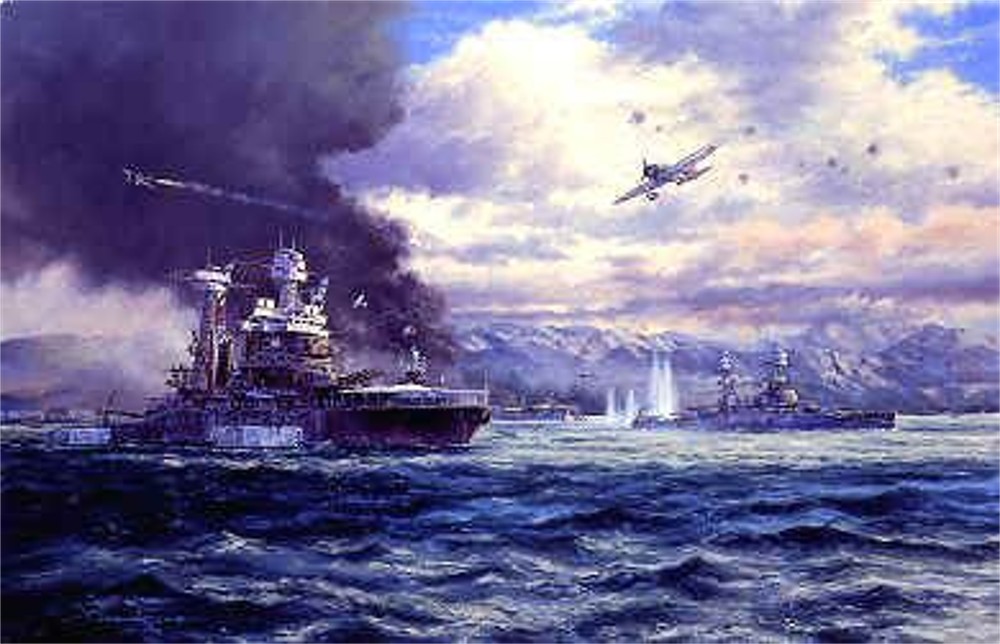
 USS Ingraham Association
USS Ingraham Association 